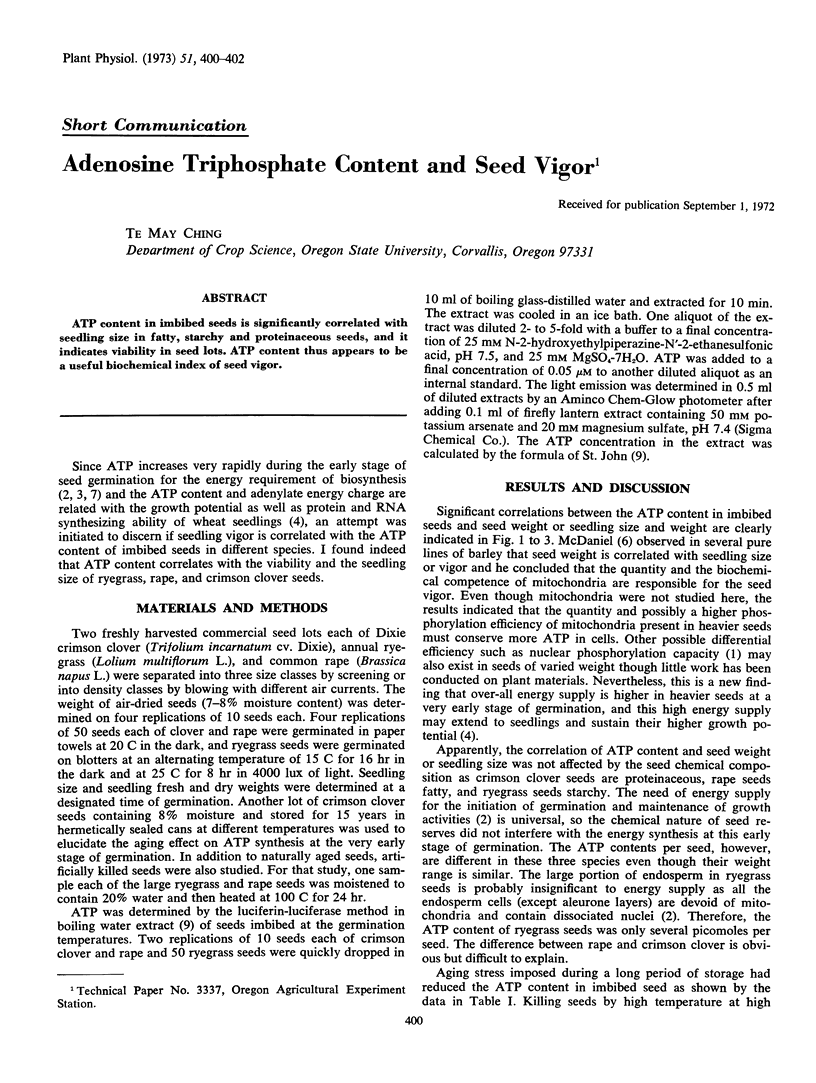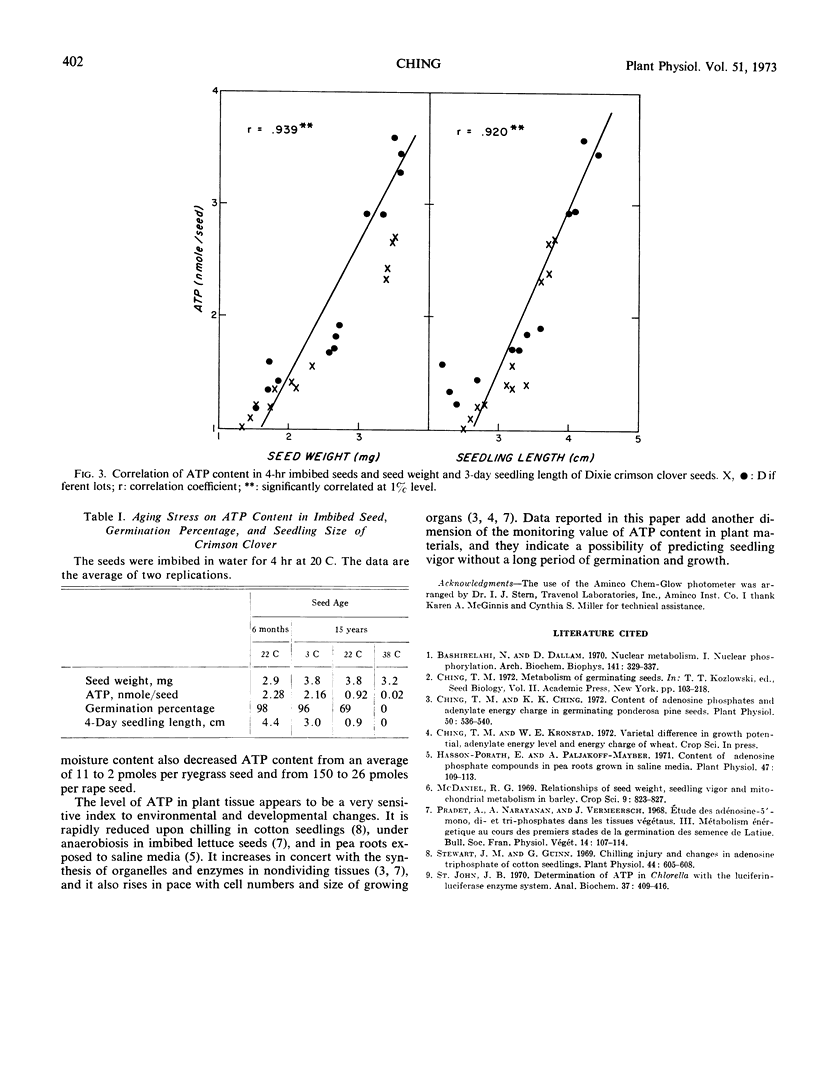Abstract
ATP content in imbibed seeds is significantly correlated with seedling size in fatty, starchy and proteinaceous seeds, and it indicates viability in seed lots. ATP content thus appears to be a useful biochemical index of seed vigor.
Full text
PDF


Selected References
These references are in PubMed. This may not be the complete list of references from this article.
- Bashirelahi N., Dallam D. Nuclear metabolism. I. Nuclear phosphorylation. Arch Biochem Biophys. 1970 Nov;141(1):329–337. doi: 10.1016/0003-9861(70)90139-6. [DOI] [PubMed] [Google Scholar]
- Ching T. M., Ching K. K. Content of adenosine phosphates and adenylate energy charge in germinating ponderosa pine seeds. Plant Physiol. 1972 Nov;50(5):536–540. doi: 10.1104/pp.50.5.536. [DOI] [PMC free article] [PubMed] [Google Scholar]
- Hasson-Porath E., Poljakoff-Mayber A. Content of adenosine phosphate compounds in pea roots grown in saline media. Plant Physiol. 1971 Jan;47(1):109–113. doi: 10.1104/pp.47.1.109. [DOI] [PMC free article] [PubMed] [Google Scholar]
- St John J. B. Determination of ATP in Chlorella with the luciferin-luciferase enzyme system. Anal Biochem. 1970 Oct;37(2):409–416. doi: 10.1016/0003-2697(70)90066-7. [DOI] [PubMed] [Google Scholar]
- Stewart J. M., Guinn G. Chilling injury and changes in adenosine triphosphate of cotton seedlings. Plant Physiol. 1969 Apr;44(4):605–608. doi: 10.1104/pp.44.4.605. [DOI] [PMC free article] [PubMed] [Google Scholar]


